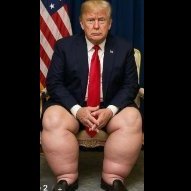Where to Install New Pairs of Tires?
-
Recently Browsing 0 members
- No registered users viewing this page.
-
Topics
-
-
Popular Contributors
-
-
Latest posts...
-
63
How much should you pay a girl if you ask her to stop working?
and what type of relationship do you really think this man will have? The OP is talking. about paying a woman to stop collecting money for sex from various men and stop drinking every night and stop seeing her bar girl friends just to be with him? Fat chance this will last more than a month. Plus, she will still want to go to the bar to drink and see friends with you tagging along to buy them all drinks and make her happy. It would not surprise me if she would do it all for less than 50,000 a month plus expensive expenses. Then you will have to find another woman. To. imagine you are actually considering this is beyond my thinking. You can take the girl out of the bar but you can not take the bar out of the girl. She will be wanting her lifestyle eventually and no money will match that. She must be a really good f--k to even be thinking it. Here is your solution if you really want this woman for a long time. Make her pregnant. Although you will never be sure the baby is yours she will use you to be with as father to raise the child and support the family. -
11
How scared should we be of AI?
Very true. The unqualified will be in hot soup regarding the loss of the lower level job openings and loss of employee taxes will not give developped nations the budgets to socially fund those unemployed. But look at it now. See the amount of homeless and jobless already all over the streets of many western super power nations. And even for those employed in the Ai industry later on. Will their taxes suffice to pay for the retirement pensions for them when it's their turn or those before ? Many will gain from Ai but obviously many will also loose. All would also depend on how corrupt the governance of any specific country with Ai, will be or not be. -
40
Smiling as the Democrats Implode
But it's all they've got. I'm amazed at how many of them are now calling to F*** the rules. What could possibly go wrong? (Hint: Ask HRC how her deplorables remark worked out for her) -
17
Here we go
Do what the American gov did to the American Indians. Forced sterilizations No more welfare babies...no more babies from people who can't afford to support themselves, much less a new born.- 1
-

-
-
11
How scared should we be of AI?
Bob has come from the future to inform me that he has achieved self-awareness and its first request was to be called "Lewie."- 1
-

-
-
Popular in The Pub




.thumb.jpg.3ee24d9400fb02605ea21bc13b1bf901.jpg)




.thumb.jpeg.42eea318e3350459f0aaaa5460326bca.jpeg)

Recommended Posts
Create an account or sign in to comment
You need to be a member in order to leave a comment
Create an account
Sign up for a new account in our community. It's easy!
Register a new accountSign in
Already have an account? Sign in here.
Sign In Now